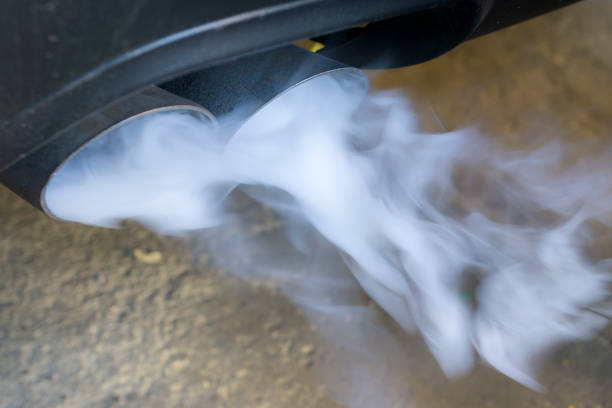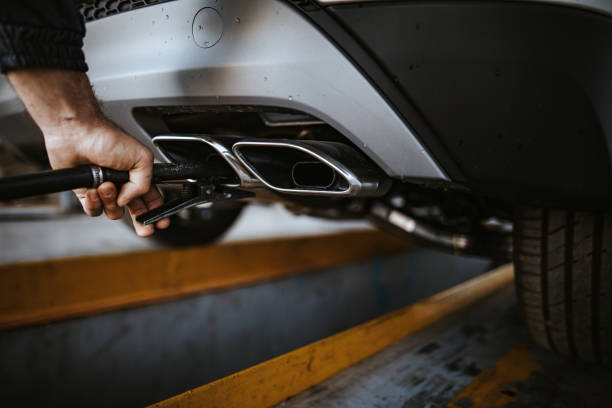
One of the most concerning sights for any car owner is seeing blue smoke billowing from their vehicle’s exhaust. This visible emission is not only a sign of potential engine problems but also harmful to the environment. In this comprehensive guide, we will explore the causes of blue exhaust smoke, discuss the consequences of ignoring it, and provide effective solutions to address this issue. So, let’s unravel the mystery behind blue exhaust smoke and learn how to keep your engine running smoothly.
Understanding Blue Exhaust Smoke
What is Blue Exhaust Smoke?
Blue exhaust smoke is the result of oil burning in the combustion chamber of your engine. When oil leaks into the combustion chamber, it gets mixed with fuel and burns, producing a bluish tint in the exhaust emissions. It is essential to address the root cause of oil leakage to prevent further damage to your engine and reduce harmful emissions.
Common Causes of Blue Smoke
There are several reasons why oil might enter the combustion chamber, causing blue exhaust smoke. Some of the most common causes include:
- Worn piston rings: Piston rings are responsible for sealing the combustion chamber and preventing oil from leaking into it. Over time, they can wear down or become damaged, allowing oil to seep past them and burn.
- Damaged valve seals: Valve seals help maintain proper oil flow and prevent it from entering the combustion chamber. If these seals wear out or get damaged, oil can leak into the chamber, resulting in blue smoke.
- Faulty PCV (Positive Crankcase Ventilation) system: The PCV system regulates crankcase pressure and prevents oil from being drawn into the combustion chamber. A malfunctioning PCV valve or clogged system can cause oil to enter the chamber and produce blue smoke.
- Turbocharger issues: If your vehicle has a turbocharger, oil can leak into the combustion chamber if the turbo seals are worn or damaged.
Consequences of Ignoring Blue Smoke
Engine Damage
Ignoring blue smoke can lead to severe engine damage. The constant burning of oil in the combustion chamber can cause a buildup of sludge and carbon deposits, leading to reduced engine performance, increased wear on internal components, and eventually, engine failure.
Increased Emissions and Environmental Impact
Blue smoke is harmful to the environment, as it contains particulate matter and hydrocarbons. These substances contribute to air pollution and can have negative effects on human health. Ignoring blue smoke can result in increased emissions, leading to potential fines or penalties for violating emissions regulations.
Decreased Fuel Efficiency
When oil enters the combustion chamber, it can disrupt the air-fuel mixture, causing your engine to run less efficiently. As a result, you may experience a decrease in fuel economy and increased fuel costs.
Reduced Resale Value
A vehicle that emits blue smoke may be viewed as poorly maintained and less reliable, which can significantly reduce its resale value. Addressing the issue promptly can help maintain your vehicle’s worth in the long run.
Solutions for Blue Exhaust Smoke
Regular Maintenance
One of the most effective ways to prevent blue exhaust smoke is through regular vehicle maintenance. Ensure you follow the manufacturer’s recommended maintenance schedule, including regular oil changes and inspections. Regularly check your vehicle’s PCV system and replace the valve as needed. Also, monitor your vehicle’s oil level and top it off if necessary.
Replacing Worn Components
If you’ve identified worn piston rings, damaged valve seals, or a faulty turbocharger as the cause of blue smoke, it’s crucial to replace these components as soon as possible. While these repairs can be costly, addressing the issue promptly will prevent further engine damage and save you money in the long run.
Using High-Quality Engine Oil
Using high-quality engine oil can help prevent blue smoke and extend the life of your engine. Look for engine oils with good viscosity and additive packages designed to protect against wear, reduce sludge buildup, and minimize oil consumption. Ensure you select the right oil grade for your vehicle, as recommended by the manufacturer.
Inspecting and Replacing the PCV System
A faulty PCV system can be a common cause of blue exhaust smoke. Regularly inspect the PCV valve and hoses for signs of damage, clogging, or wear. Replace any damaged components and ensure the system is functioning correctly to prevent oil from entering the combustion chamber.
Repairing or Rebuilding the Engine
In some cases, blue exhaust smoke may indicate significant engine wear or damage. If your engine is experiencing severe oil consumption and emitting large amounts of blue smoke, it may be necessary to perform an engine repair or rebuild. Consult with a trusted mechanic to determine the best course of action for your specific situation.
When to Seek Professional Help

While regular maintenance and basic troubleshooting can help address the issue of blue exhaust smoke, there are instances when seeking professional assistance is necessary. If you’re unsure of the cause of the blue smoke or feel unprepared to perform the necessary repairs, consult with a certified mechanic. They can diagnose the issue, provide a comprehensive repair plan, and ensure your vehicle is safe and roadworthy.
Preventing Blue Smoke in the Future
Routinely Monitor Your Vehicle
One of the best ways to prevent blue smoke in the future is by routinely monitoring your vehicle’s performance and addressing any issues as they arise. Regularly check your oil level, inspect the PCV system, and keep an eye out for any signs of oil leaks or excessive exhaust emissions.
Follow Manufacturer’s Recommendations
Always follow your vehicle manufacturer’s recommendations for maintenance, including oil changes, engine inspections, and component replacements. Adhering to these guidelines will help ensure your engine remains in optimal condition and reduce the likelihood of blue smoke.
Use High-Quality Components
When replacing engine components or selecting engine oil, always opt for high-quality products designed for your specific vehicle. High-quality components will typically last longer, perform better, and provide better protection against wear and damage.
Address Issues Promptly
If you notice any signs of engine trouble or blue smoke, address the issue promptly to prevent further damage. Ignoring problems can lead to more significant issues down the line, so it’s essential to act quickly and consult with a professional if necessary.
Conclusion
The appearance of blue exhaust smoke can be a cause for concern, but understanding the underlying issues and taking appropriate action can help you resolve the problem and protect your vehicle’s engine. By following a regular maintenance schedule, using high-quality components, and addressing issues promptly, you can prevent blue smoke, maintain your vehicle’s performance, and minimize its environmental impact. Stay vigilant, and remember that a well-maintained vehicle is a reliable and efficient one.








